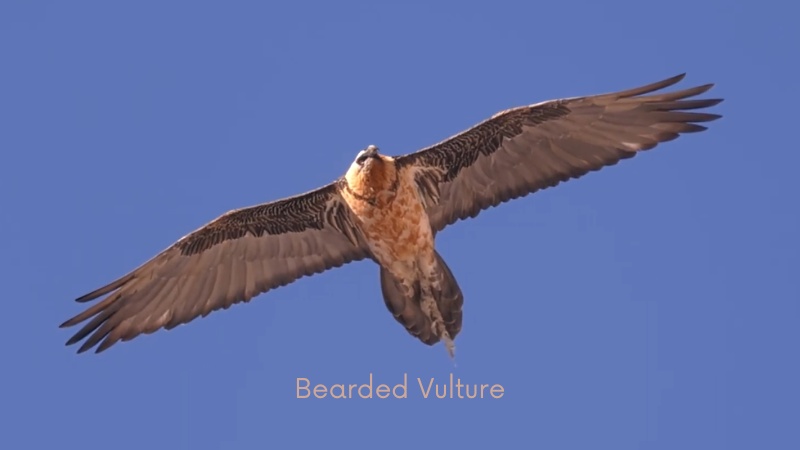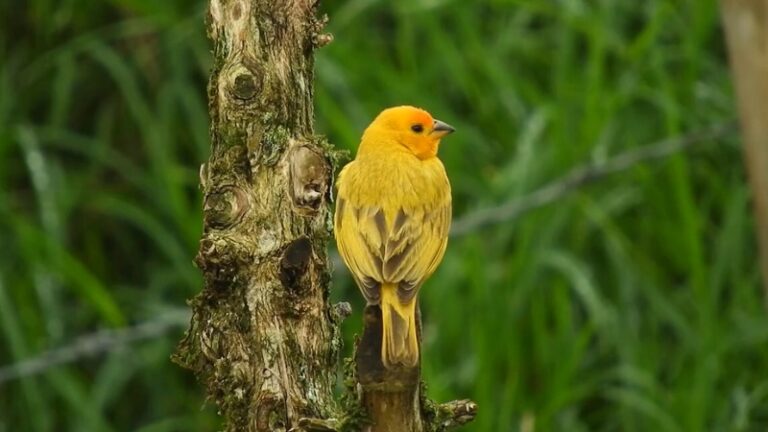Earth’s 15 Highest Flying Birds: Wings of Majesty
Have you ever gazed up at the sky, marveling at the graceful flight of birds?
These winged creatures possess an incredible ability to soar through the air, reaching impressive heights that seem almost magical.
In the realm of avian wonders, some species stand out as the true masters of the skies, soaring to great altitudes and captivating our imaginations.
Join me on a journey as we explore the world of the highest flying birds.
The Kings and Queens of Altitude
In the vast realm of birds, a few remarkable species have earned the title of “highest flying birds.”
These magnificent creatures have adapted and evolved to conquer heights, enabling them to inhabit and navigate environments that would seem impossible for other feathered beings.
Let’s delve into the world of these avian high-flyers and discover their unique characteristics and habitats.
1. Rüppell’s Vulture
Rüppell’s Vulture (Gyps rueppellii) claims the crown for the highest flying bird in the world.
This majestic avian marvel is found in the African continent and is often observed soaring over the African plains, especially around mountain ranges.
It has been recorded flying at altitudes exceeding 37,000 feet (11,000 meters), a staggering height that puts it in a league of its own.
2. Common Crane
The Common Crane (Grus grus) is a migratory bird that is known for its impressive flights across continents.
These magnificent birds have been documented flying at altitudes of up to 33,000 feet (10,000 meters) during their migration journeys, which can span thousands of kilometers.
With their long wingspan and sturdy bodies, Common Cranes conquer great heights with grace.
3. Bar-headed Goose
The Bar-headed Goose (Anser indicus) is a fascinating bird that breeds in Central Asia and undertakes one of the most incredible migrations on the planet.
This goose is famous for its ability to fly over the Himalayas, crossing towering peaks that reach heights of over 29,000 feet (8,800 meters).
Their remarkable adaptation to high-altitude flight allows them to navigate thin air and survive in harsh conditions.
4. Andean Condor
Venturing to the South American continent, we encounter the mighty Andean Condor (Vultur gryphus).
This magnificent bird, with its massive wingspan of up to ten feet, dominates the skies of the Andes mountain range.
With their incredible aerial skills, Andean Condors have been observed soaring at altitudes surpassing 22,000 feet (6,700 meters), allowing them to survey vast territories in search of carrion.
5. Alpine Chough
Found in high-altitude regions of Europe and Asia, the Alpine Chough (Pyrrhocorax graculus) is a crow-like bird known for its mountain-dwelling prowess.
These agile fliers navigate the Alpine peaks with ease, often reaching altitudes of up to 21,000 feet (6,400 meters).
Their jet-black feathers stand out against the snowy landscape, a testament to their adaptation to the heights.
6. Bar-tailed Godwit
The Bar-tailed Godwit (Limosa lapponica) is a remarkable shorebird known for its incredible long-distance flights.
During migration, these birds undertake a non-stop journey across the Pacific Ocean, covering distances of up to 7,000 miles (11,000 kilometers).
As they fly at high altitudes to take advantage of favorable winds, they have been spotted reaching heights of approximately 20,000 feet (6,400 meters).
7. Bearded Vulture
The Bearded Vulture (Gypaetus barbatus) is a unique and striking bird that inhabits high-altitude regions of Europe, Asia, and Africa.
Known for its distinctive appearance and feeding habits, this vulture is also an impressive high flyer.
With a wingspan of over nine feet, the Bearded Vulture can soar at altitudes of up to 19,000 feet (5,800 meters) while effortlessly gliding through the mountainous landscapes it calls home.
8. White Stork
The White Stork (Ciconia ciconia) is a symbol of good fortune and fertility in many cultures.
These elegant birds undertake long migrations between Europe and Africa, often flying at considerable heights.
While soaring across the skies, White Storks have been observed reaching altitudes of around 16,000 feet (4,900 meters), displaying their remarkable flying abilities.
9. Whooper Swan
The Whooper Swan (Cygnus cygnus) is a large and beautiful waterbird that breeds in the Arctic region and migrates to milder climates during the winter.
As they embark on their journeys, Whooper Swans can ascend to altitudes of approximately 14,000 feet (4,300 meters), showcasing their impressive flying skills amidst vast landscapes and celestial vistas.
10. Greater Flamingo
Known for their vibrant pink plumage and graceful presence, Greater Flamingos (Phoenicopterus roseus) are expert flyers.
These tall wading birds can achieve heights of up to 13,000 feet (4,000 meters) while traversing large distances during their migrations.
Their long, slender wings allow them to gracefully soar through the skies, making them a sight to behold.
11. Griffon Vulture
The Griffon Vulture (Gyps fulvus) is a majestic bird that inhabits mountainous regions in Europe, Asia, and Africa.
With a wingspan that can exceed nine feet, Griffon Vultures take to the skies with ease.
These impressive flyers have been recorded soaring at altitudes of up to 12,000 feet (3,700 meters), showcasing their ability to conquer the heights and survey their vast territories.
12. Golden Eagle
Among the most iconic and powerful birds of prey, the Golden Eagle (Aquila chrysaetos) is renowned for its soaring abilities and majestic presence.
With a wingspan that can reach over seven feet, Golden Eagles can ascend to altitudes of approximately 11,000 feet (3,400 meters) while scanning the ground below for potential prey.
Their aerial prowess and keen eyesight make them formidable hunters of the skies.
13. Mallard
While not typically associated with high-flying, the Mallard (Anas platyrhynchos), one of the most widespread duck species, deserves a mention.
During migration, Mallards have been observed flying at altitudes of around 10,000 feet (3,000 meters).
These versatile ducks adapt to various habitats, including wetlands, lakes, and rivers, and showcase their ability to navigate the skies at surprising heights.
14. Bald Eagle
A symbol of strength and freedom, the Bald Eagle (Haliaeetus leucocephalus) is a magnificent bird native to North America.
With its impressive wingspan of up to seven feet, the Bald Eagle is an agile flyer, capable of reaching heights of around 10,000 feet (3,000 meters).
It soars through the skies with grace and dominance, exemplifying the beauty and resilience of the avian world.
15. Andean Goose
The Andean Goose (Chloephaga melanoptera) is a species of waterfowl that resides in the high-altitude regions of the Andes Mountains.
These geese are adapted to the harsh conditions of their habitat and are skilled fliers.
They have been spotted flying at altitudes of up to 9,000 feet (2,700 meters), effortlessly gliding through the thin air as they traverse their mountainous home.
The Wonders of Adaptation
What enables these remarkable birds to soar to such impressive heights?
It is a combination of their physical attributes, physiological adaptations, and unique behaviors that contribute to their high-flying abilities.
One crucial factor is their wing design. Birds with long, broad wings, such as vultures and eagles, are built for soaring and sustained flight.
These wings provide excellent lift and maneuverability, allowing them to ascend to great heights and glide effortlessly for extended periods.
Additionally, the respiratory systems of high-flying birds are specially adapted to cope with the thin air at high altitudes.
They have efficient oxygen uptake and circulation mechanisms, enabling them to extract sufficient oxygen from the atmosphere to support their demanding flights.
Furthermore, these birds possess strong muscles and robust cardiovascular systems, which enable them to generate and sustain the energy required for high-altitude flights.
Their bodies are designed to endure the physical stresses associated with flying at extreme heights.
While some species, like the Bar-headed Goose, have developed specialized hemoglobin to enhance oxygen uptake, others rely on skillful thermoregulation to maintain their body temperature and metabolic functions in the thin, cold air of high-altitude environments.
These adaptations showcase the remarkable resilience and ingenuity of these high-flying birds, allowing them to conquer the skies and explore habitats that are inaccessible to many other species.
A Window into the Skies
The world of the highest flying birds offers us a glimpse into the wonders of avian flight and the incredible diversity of the natural world.
These majestic creatures inspire awe and capture our imagination as they navigate the vast expanse of the skies.
As we gaze upon these avian wonders, let us appreciate the beauty of their adaptations and the marvels of evolution.
Their ability to soar to such heights serves as a reminder of the boundless possibilities and untamed splendor of the natural world.
Final thoughts
So, the next time you find yourself outdoors, take a moment to look up and marvel at the birds soaring above.
You might just catch a glimpse of one of these highest flying birds, gracefully traversing the heavens and reminding us of the limitless potential that lies within the realm of flight.
In a world where the skies are their playground, these highest flying birds reign supreme, enchanting us with their grace, resilience, and unyielding spirit of exploration.


